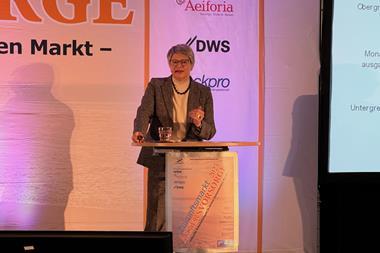Pension fund allocations to exchange-traded fund (ETFs) are driven by diversification and tactics over short-term transition management, research shows.
Schemes’ allocations have grown in recent years but are perceived to be used mainly in investment strategy transition and overlay management.
However, research from Greenwich Associates found that pension funds hold onto ETF investments for an average of 29 months, the highest of all institutions in Europe.
Its survey of 120 European institutional investors, of which 68 were pension funds, found that one-quarter actively allocate to ETFs.
Between the insurance company, asset manager and pension fund respondents, investors allocate an average of 7% of assets to ETFs, the study showed.
Greenwich said differences in pension fund regulation within Europe meant it was difficult to make country comparisons, but that public and industry-wide schemes were more likely to use ETFs than company schemes.
The study, sponsored by BlackRock, also found 69% of pension fund investors used ETFs for international diversification.
More than half (53%) used the funds for tactical adjustment in portfolios, as well as part of a core allocation.
Only 9% used ETFs for transitional management, with roughly one in 10 using the strategy for interim beta or overlay management.
The report said: “Despite the widespread use of ETFs for tactical applications, few institutions are employing ETFs as true short-term investments.
“Less than 2% of study participants report average holding periods of a month or shorter. In practice, European pension funds seem to be employing ETFs in the most strategic manner.”
The study also anticipated a growing interest from pension funds, with more than one-fifth of institutions expected to increase ETF exposure over the next three years.
However, Greenwich said the actual rate could be higher, as investors – particularly those on the Continent – continuing to diversify away from European government bonds.
“As they do so, [investors] are moving beyond the area of expertise and the capabilities of the internal investment departments that have managed sizeable portions of those assets,” the report said.
“These changes will likely create demand for new means of achieving desired investment exposures and for new tools for risk management, transition management and other functions associated with more diverse and complex portfolios.”
Greenwich also said it expected ETF usage to expand further away from equities, where it is primarily used.
“Robust adoption rates in fixed income and experimentation with ETFs in new asset classes such as commodities will also drive ETF growth,” it said.
Research from PwC said 78% of asset managers and investment companies surveyed in its report expected total assets in ETFs to increase from $2.6trn (€2.3trn) to $5trn in 2020.























No comments yet